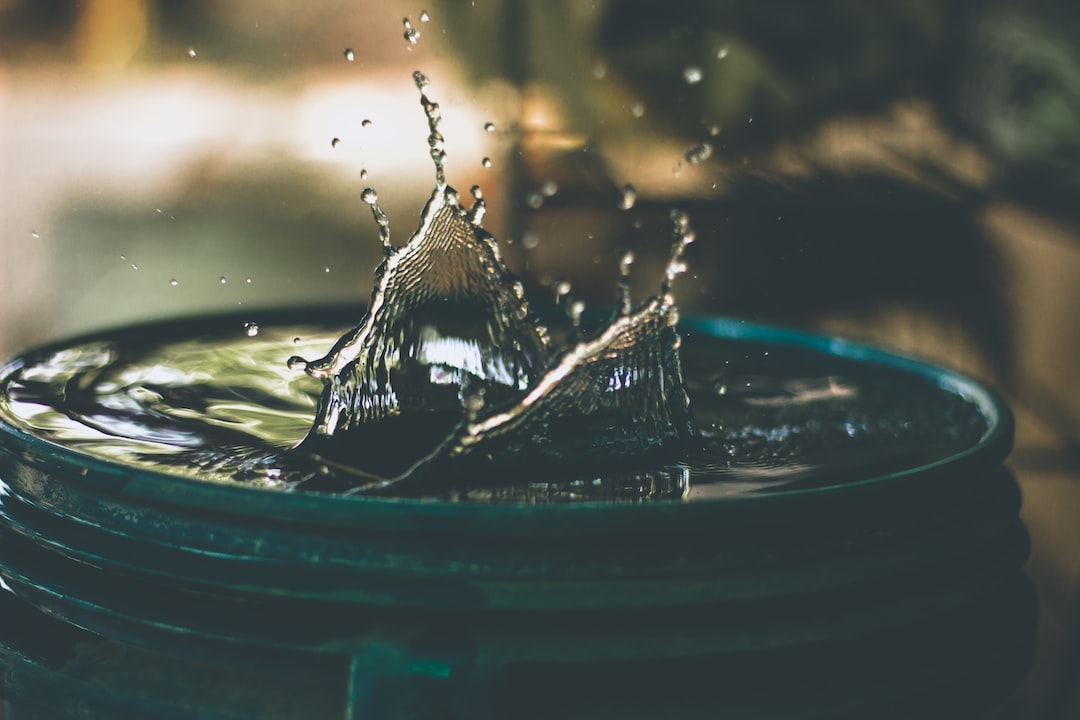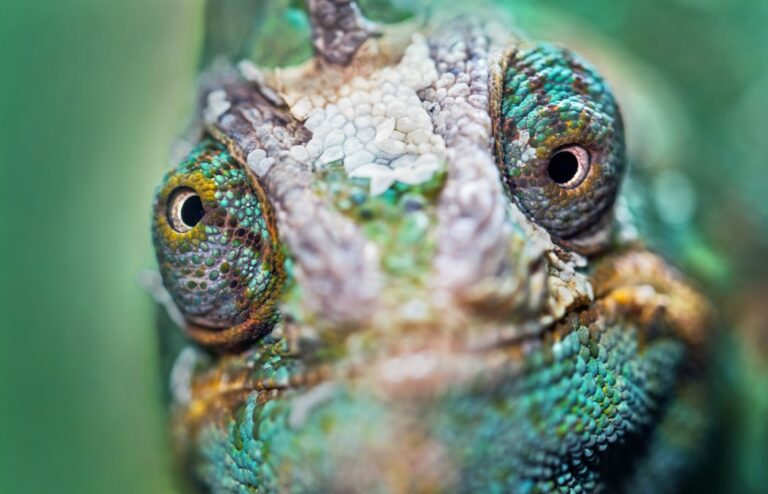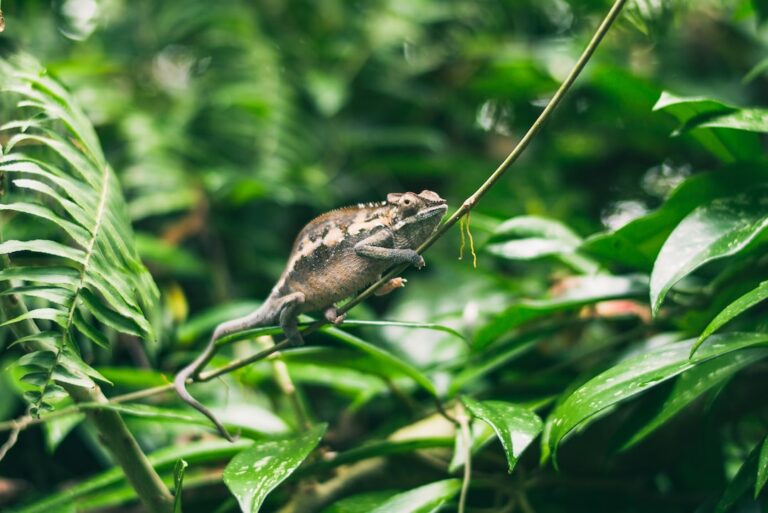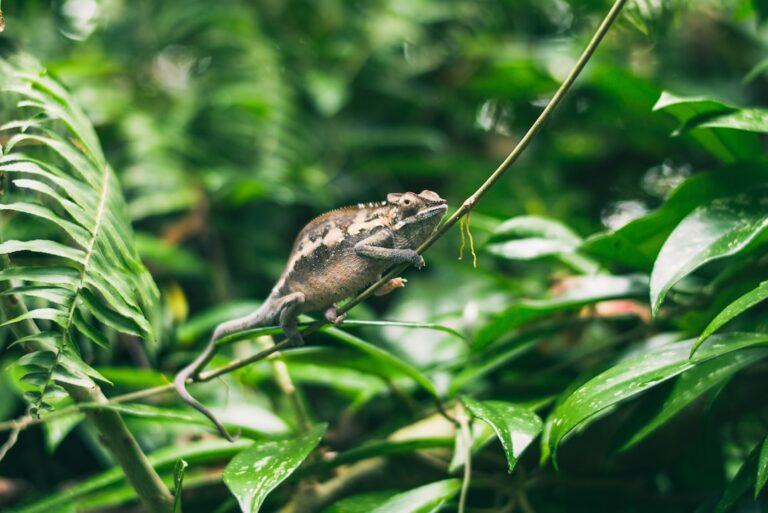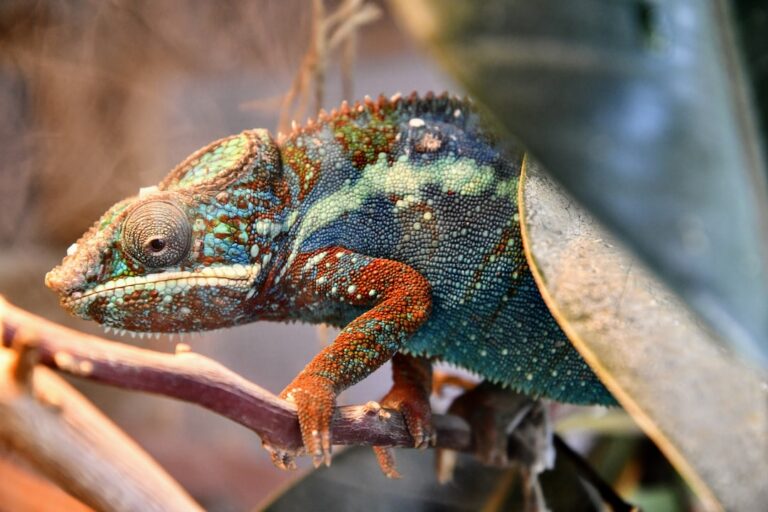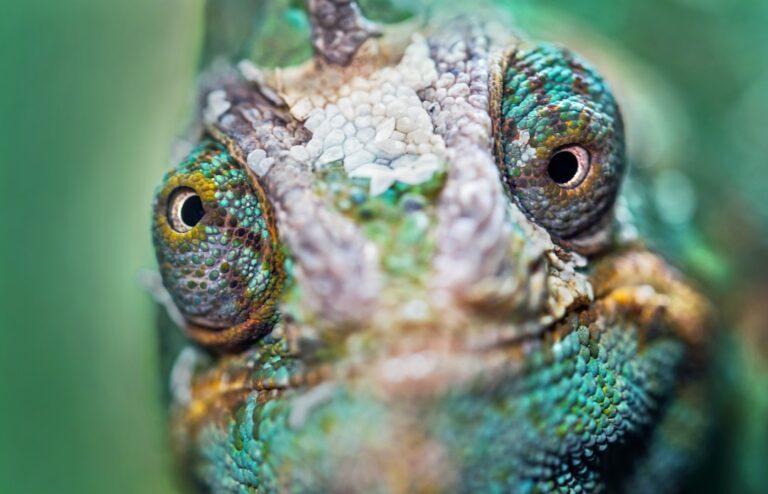Will Chameleons Drink from A Waterfall?
Chameleons are fascinating creatures known for their ability to change color and blend into their surroundings. They are found in various parts of the world, including Africa, Madagascar, and parts of Asia and Europe. Chameleons have unique characteristics that set them apart from other reptiles, such as their independently moving eyes, long tongues, and prehensile tails.
One aspect of chameleons’ behavior that is particularly interesting is their drinking habits. Unlike many other animals, chameleons do not drink water by lapping it up with their tongues or by using their mouths. Instead, they rely on a different method to obtain water.
Table of Contents
The Importance of Water for Chameleons
Water is crucial for the health and survival of chameleons. Like all living organisms, chameleons need water to survive. It plays a vital role in their bodily functions, such as digestion, temperature regulation, and hydration.
In the wild, chameleons obtain water from various sources. They may drink rainwater that collects on leaves or other surfaces, or they may lick dewdrops off plants early in the morning. Chameleons are also known to drink water droplets that form on leaves after a rain shower.
Different Water Sources for Chameleons
Chameleons have access to a variety of water sources in their natural habitat. These include rainwater, dewdrops, and water droplets on leaves after rainfall. Each water source has its pros and cons.
Rainwater is a reliable source of hydration for chameleons. It is clean and readily available during rainy seasons. However, during dry periods, chameleons may struggle to find enough rainwater to meet their needs.
Dewdrops are another source of water for chameleons. They form on plants early in the morning and can provide a source of hydration for chameleons. However, dewdrops are small and may not be sufficient to meet all of a chameleon’s water needs.
Water droplets that form on leaves after rainfall are another potential water source for chameleons. These droplets are larger than dewdrops and can provide a more substantial amount of water. However, they may not be available in sufficient quantities during dry periods.
The Relationship Between Chameleons and Waterfalls
Chameleons have a special relationship with waterfalls. They are often attracted to the sound and movement of falling water. This attraction may be due to the fact that waterfalls provide a more abundant and reliable source of water compared to other sources in their natural habitat.
Waterfalls offer chameleons a constant supply of fresh, flowing water. The movement of the water helps to oxygenate it, making it more appealing to chameleons. Additionally, the sound of the waterfall may help to mask other sounds in the environment, making it easier for chameleons to approach without being detected by predators.
Factors That Influence Chameleons’ Drinking Behavior
Several factors can influence chameleons’ drinking behavior. One of the most important factors is temperature. Chameleons are ectothermic animals, which means that their body temperature is regulated by their environment. When temperatures are high, chameleons may drink more water to stay hydrated and cool down.
Humidity is another factor that can affect chameleons’ drinking behavior. Chameleons live in environments with varying levels of humidity, and they may adjust their water intake accordingly. In areas with high humidity, chameleons may drink less water because they can obtain moisture from the air. In contrast, in areas with low humidity, chameleons may drink more water to compensate for the lack of moisture in the air.
Other environmental factors, such as the availability of water sources and the presence of predators, can also influence chameleons’ drinking behavior. Chameleons may be more likely to drink from waterfalls if other water sources are scarce or if they feel safer approaching a waterfall compared to other sources.
Observations of Chameleons Drinking from Waterfalls
There have been several firsthand observations of chameleons drinking from waterfalls in the wild. These observations provide valuable insights into chameleons’ drinking behavior and their relationship with waterfalls.
In one study, researchers observed chameleons approaching waterfalls and drinking from the falling water. The chameleons would position themselves near the edge of the waterfall and extend their tongues to catch the droplets of water as they fell. They would then retract their tongues and swallow the water.
These observations suggest that chameleons are not only attracted to the sound and movement of waterfalls but also actively seek out the falling water as a source of hydration. The researchers also noted that chameleons would often return to the same waterfall multiple times, indicating that they may have learned to associate waterfalls with a reliable source of water.
Benefits and Risks of Drinking from Waterfalls
Drinking from waterfalls can have both benefits and risks for chameleons. One of the main benefits is that waterfalls provide a constant supply of fresh, flowing water. This water is more likely to be clean and free from contaminants compared to stagnant water sources.
However, there are also risks associated with drinking from waterfalls. Chameleons may need to navigate treacherous terrain to reach a waterfall, which puts them at risk of injury or predation. Additionally, the force of the falling water can be strong, making it difficult for chameleons to drink without getting swept away.
How to Provide Water for Chameleons in Captivity
In captivity, it is important to provide chameleons with access to clean, fresh water. There are several methods for providing water to chameleons in captivity, each with its pros and cons.
One method is to use a misting system or spray bottle to create a fine mist of water in the chameleon’s enclosure. This mimics the dewdrops that chameleons would encounter in the wild and allows them to drink from the droplets that form on leaves and other surfaces.
Another method is to provide a shallow dish of water in the chameleon’s enclosure. This allows the chameleon to drink directly from the dish if they choose to do so. However, it is important to monitor the water dish closely to ensure that it remains clean and does not become a breeding ground for bacteria or parasites.
Tips for Encouraging Chameleons to Drink More Water
There are several strategies for encouraging chameleons to drink more water. One strategy is to provide a variety of water sources in the chameleon’s enclosure. This can include misting the enclosure with a spray bottle, providing a shallow dish of water, and even using a dripper system that simulates falling water.
Monitoring the chameleon’s water intake is also important. This can be done by observing their behavior and checking for signs of dehydration, such as sunken eyes or wrinkled skin. If a chameleon is not drinking enough water, adjustments can be made to their environment, such as increasing humidity or providing more water sources.
Chameleons and Waterfalls – A Natural Relationship?
In conclusion, chameleons have unique drinking habits that set them apart from other animals. They rely on various water sources in their natural habitat, including rainwater, dewdrops, and water droplets on leaves after rainfall. Chameleons are also attracted to waterfalls, which provide a constant supply of fresh, flowing water.
Understanding chameleons’ drinking behavior and providing them with access to clean, fresh water is crucial for their health and survival. By mimicking their natural environment and providing a variety of water sources, we can help ensure that chameleons stay hydrated and thrive in captivity. The relationship between chameleons and waterfalls is a fascinating one that teaches us about the unique adaptations and behaviors of these incredible creatures.
If you’re interested in learning more about reptiles, you might also enjoy reading the article “Are Turtles Dumb?” on Reptile Friend’s website. This informative piece explores the intelligence of turtles and debunks common misconceptions about their cognitive abilities. Discover fascinating facts about these ancient creatures and gain a deeper understanding of their behavior. Check it out here!

